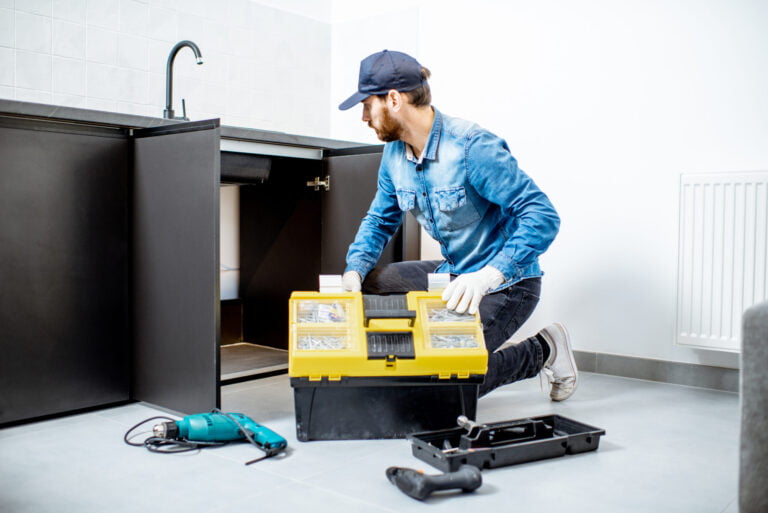Moving can be one of the most stressful events in a person’s life. From packing up your belongings and saying goodbye to your old home to getting settled in a new place, the process can be daunting and filled with uncertainty. However, with the right planning and approach, moving homes can be a much smoother and more enjoyable experience. In this article, we will explore some tried and true strategies for making your next move as stress-free as possible.
Streamlining Your Packing Process
The first step to a smooth move is to have a streamlined packing process. This not only means decluttering and getting rid of items you no longer need but also organizing your belongings in a way that makes it easy to transport and unpack at your new home.
One of the most effective ways to transport your belongings is to rent a cargo van one way. This allows you to pack up your belongings in one location and drive them to your new home without the need to return the vehicle to the original location. This can save you time and money, especially if you’re moving a long distance. Cargo vans are spacious and designed to hold a large number of items, making them ideal for transporting household belongings.
Beyond cargo vans, when packing, it’s essential to start early and give yourself plenty of time. Last-minute packing can lead to items being thrown haphazardly into boxes, which can result in breakages or lost belongings. Instead, set aside time each day or week leading up to your move to carefully pack your items. This not only ensures that your belongings are packed securely but also allows you to sort through and declutter items you no longer need.
As you pack, label each box clearly, indicating its contents and the room it belongs to. This will make the unpacking process much easier and quicker. Additionally, consider packing a separate “first-night” box with essentials like toiletries, a change of clothes, and important documents. This will ensure that you have everything you need for your first night in your new home without having to dig through boxes.
Planning Your Move Day

The day of your move can be particularly stressful, but with careful planning, you can make the process much smoother. Start by making a timeline for the day, outlining when you’ll start loading the cargo van rental, when you’ll leave your old home, and when you’ll arrive at your new home. This will give you a clear sense of what needs to be done and help to reduce any last-minute rushing or panic.
On the day of your move, make sure to have a plan for meals. Whether you choose to pack a cooler with sandwiches and snacks or decide to order takeout, having a meal plan will ensure you don’t go hungry amidst the chaos.
Additionally, have a plan for pets and children. Moving can be stressful for pets and kids as well, so consider having a friend or family member look after them for the day or setting up a safe space in your new home where they can relax and be out of the way of the movers.
Understanding the Costs Involved
One aspect of moving homes that can often become a stumbling block is the financial aspect. Unexpected costs can spring up, making the process more burdensome than initially anticipated. Hence, it’s beneficial to outline a budget that comprehensively considers all possible expenditures related to the move.
Start by getting quotations from various moving services, factoring in costs for packing materials, possible storage needs, and other incidentals. Don’t forget to account for any initial expenses in your new home, such as deposits, connection fees for utilities, and potential home repairs or upgrades. Keeping these costs in mind can prevent unexpected surprises and stress further down the line.
The Psychological Aspect of Moving
While the physical process of relocating can be taxing, the emotional and psychological facets of moving are often overlooked. Changing your environment, leaving behind familiar surroundings, and adapting to a new community can bring about feelings of anxiety, sadness, or even excitement. Recognizing and addressing these emotions can help in making the transition smoother.
If you’re moving away from close friends or family, consider scheduling regular video calls or setting up a visitation plan to keep those connections alive. For children, a move can be even more challenging as they might be leaving behind close friends and familiar routines. Involve them in the moving process, perhaps by allowing them to set up their room or explore the new neighborhood with you. This can provide a sense of agency and help in adapting to the change.
Picking the Right Time to Move
Timing can play a crucial role in easing the moving process. Some seasons are busier than others for moving companies, which can affect availability and pricing. Spring and summer tend to be peak seasons due to the more favorable weather conditions and the alignment with school holidays. However, this also means that services might be more expensive and less readily available.
If possible, consider moving during off-peak times like fall or winter. Not only could this save you money, but you might also find that service providers have more flexibility in terms of scheduling, making the process less rushed.
Insuring Your Belongings

The potential for damage or loss of your items during the move is a valid concern. To counter this, it’s wise to consider insurance options. Many moving companies offer varying levels of coverage for the items they transport. You can opt for full-value protection, where the moving company is liable for the replacement value of lost or damaged goods, or released-value protection, which is often offered at no additional cost but provides minimal coverage.
If you have particularly valuable items, you might want to consider purchasing additional insurance. Take photographs of all your valuables and major electronics before the move to have a record in case of any disputes.
Adjusting to Your New Home
Once you’ve arrived at your new home and started the unpacking process, it’s essential to give yourself time to adjust. This might mean taking a few days off work or setting aside specific times to relax and explore your new surroundings.
Unpacking can be just as stressful as packing, so it’s crucial to approach it with the same level of organization. Start by unpacking essential items first, such as your kitchen utensils, toiletries, and clothing. Once these are set up, you can move on to less essential items like decor and miscellaneous belongings.
Remember that it’s okay not to have everything unpacked and set up right away. Take your time and prioritize what needs to be done first. This will help reduce the pressure and stress of feeling like you need to have everything perfect immediately.
As you settle into your new home, take the time to explore your new neighborhood. Familiarizing yourself with local amenities, parks, and other places of interest can help you feel more at home and connected to your new community.
Concluding Thoughts: Embracing the Journey
Moving homes is undoubtedly a significant life event, filled with both challenges and opportunities. While the process can be stressful, it’s essential to remember that every move represents a new chapter and a fresh start. By approaching your move with careful planning, organization, and a positive mindset, you can make the process much more manageable and even enjoyable. Embrace the journey, savor the memories of your old home, and look forward to the new experiences and adventures that await in your new abode.





































